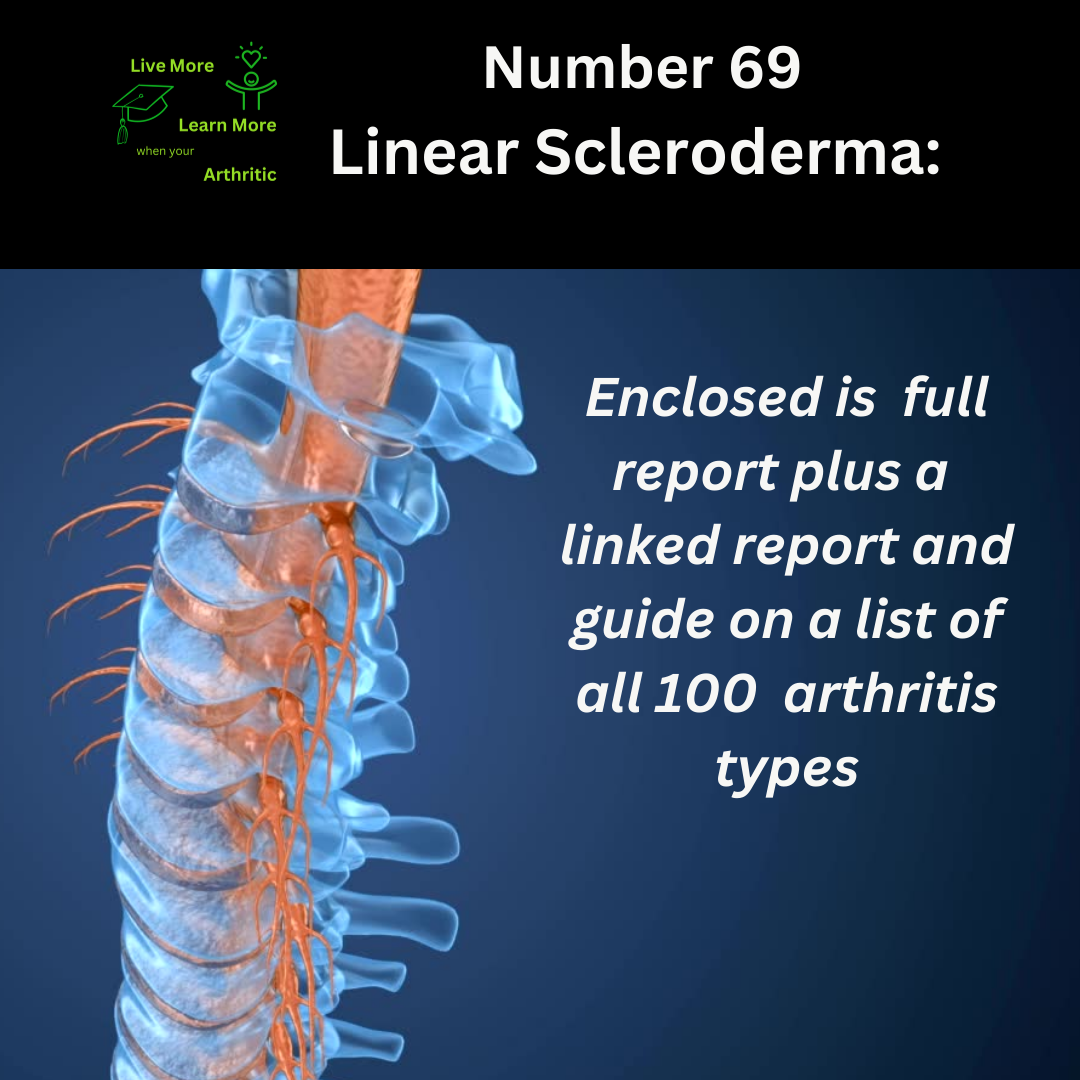
Linear Scleroderma: Number 69 on the list of 100 types of Arthritis
Linear scleroderma, also known as localized scleroderma, is a rare autoimmune disorder that primarily affects the skin and underlying tissues. While it poses challenges, understanding this condition and adopting a proactive approach can significantly improve quality of life for individuals living with linear scleroderma.
 Description of Linear Scleroderma
Description of Linear Scleroderma
Linear scleroderma is characterized by thickening and hardening of the skin and underlying tissues, typically affecting one or more areas of the body in a linear pattern. This condition is a subtype of scleroderma, a group of autoimmune diseases that involve abnormal growth of connective tissue.
Causes and Triggers
The exact cause of linear scleroderma is not fully understood, but it is believed to involve an autoimmune response, where the immune system mistakenly attacks healthy tissues in the body. Genetic predisposition and environmental factors may also play a role in triggering the disease.
Symptoms
The symptoms of linear scleroderma can vary depending on the location and extent of the affected area, but commonly include:
- Skin changes: Thickening, hardening, and tightening of the skin, often in a linear or band-like pattern.
- Limited range of motion: In cases where joints or underlying tissues are involved, there may be stiffness and restricted movement.
- Localized pain: Discomfort or pain in the affected area, especially with movement or pressure.
- Visible deformities: Over time, linear scleroderma can lead to visible deformities or asymmetry of the affected body part.
Common Ages of Onset
Linear scleroderma can present at any age, but it most commonly appears in childhood or during early adolescence. However, it can also affect adults.
Impact on Lifespan
Linear scleroderma generally does not affect one’s lifespan directly. However, complications related to the disease, such as joint stiffness and deformities, can impact overall quality of life and mobility.
Achieving a Higher Quality of Life
A proactive approach to managing linear scleroderma can improve quality of life and mitigate symptoms:
- Physical therapy: Regular stretching and strengthening exercises can help maintain flexibility and prevent joint stiffness.
- Skin care: Moisturizing the skin and protecting it from trauma or injury can minimize complications associated with skin changes.
- Psychological support: Coping strategies and support networks can help individuals manage the emotional and psychological impact of living with a chronic condition.
Possible Complications
Complications of linear scleroderma may include:
- Joint contractures: Persistent tightening of the skin and underlying tissues can lead to joint stiffness and limited mobility.
- Facial asymmetry: Linear scleroderma affecting the face or head can result in visible asymmetry and cosmetic concerns.
- Bone abnormalities: In severe cases, bone growth abnormalities or deformities may occur, particularly if underlying tissues are affected.
 Natural Breakthroughs or Health Advantages
Natural Breakthroughs or Health Advantages
While there are no specific natural breakthroughs for linear scleroderma, adopting a healthy lifestyle with a balanced diet, regular exercise, and stress management can support overall well-being and immune function.
Gender and Age Prevalence
Linear scleroderma affects both males and females, although it may be more common in females. The condition can occur at any age but is often diagnosed in childhood or adolescence.
Interconnected Diseases or Conditions
Linear scleroderma is a localized form of scleroderma, which is part of a broader group of autoimmune diseases. Individuals with scleroderma may be at increased risk of developing other autoimmune conditions, such as systemic scleroderma or autoimmune thyroid disorders.
In conclusion, linear scleroderma is a rare autoimmune disorders that primarily affects the skin and underlying tissues. While it poses challenges, a proactive approach to management can significantly improve quality of life and mitigate complications associated with the disease. Collaboration with healthcare professionals specializing in autoimmune disorders is essential for personalized care and optimal outcomes.

